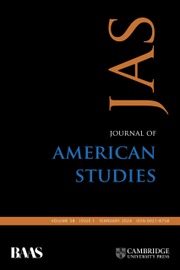25 Stephen Bottoms notes that the results of the SPE were never published in a peer-reviewed outlet, and yet “the experiment's findings have been treated, not least by Zimbardo himself, as demonstrating ‘timeless’ scientific truths.” See Bottoms, Stephen, “Timeless Cruelty: Performing the Stanford Prison Experiment,” Performance Research: A Journal of the Performing Arts, 19, 3 (2014), 162–75CrossRefGoogle Scholar, 163. The positivity with which The Lucifer Effect has been received, and Zimbardo's importance to the fields of social and political psychology even in the face of critical reviews of the SPE, are evidenced in several reviews of the book. See Krueger, Joachim I., “Lucifer's Last Laugh: The Devil Is in the Details,” American Journal of Psychology, 121, 2 (2008), 335–41CrossRefGoogle Scholar; Rose McDermott, review of The Lucifer Effect: Understanding How Good People Turn Evil, by Zimbardo, Philip, Political Psychology, 28, 5 (2007), 644–46Google Scholar; Smith, M. Brewster, “The Sociogenesis of Evil,” Peace and Conflict: Journal of Peace Psychology, 13, 4 (2007), 463–65CrossRefGoogle Scholar.


